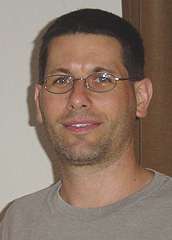Tech Talk
“It’s a VERY tangled web we weave…”
By Jamie Allison
How many websites are out there and will it ever stop? When was the first email sent? I ask myself these questions sometimes and it still boggles the mind. I have been working in the information technology industry for over 15 years now and I am still amazed at how things work the way they do.
Email, websites, Twitter, Facebook, blogs, online games, fantasy sports – just to name a few.
Email – Much like the first telegraph or phone call, the first email marked an historic moment in the evolution of communication. Unfortunately, the message itself was less than earth shattering. The text of that first electronic missive consisted of something like “QWERTYUIOP.” Sent by computer engineer Ray Tomlinson in 1971, the email was simply a test message to himself. The email was sent from one computer to another computer sitting right beside it in Cambridge, Massachusetts, but it traveled via ARPANET, a network of computers that was the precursor to the Internet. Working for Bolt Beranek and Newman (the company picked by the U.S. Defense Department to build ARPANET* see below), Tomlinson had been fooling around with two programs called SNDMSG and READMAIL, which allowed users to leave messages for one another on the same machine. He applied the idea behind these programs to a third program called CYPNET, which allowed users to send and receive files between computers. The combined technology allowed people to send and receive files that could be appended between different machines.
*The ARPANET (Advanced Research Projects Agency Network) created by ARPA of the United States Department of Defense during the Cold War, was the world’s first operational packet switching network, and the predecessor of the global Internet. Packet switching, now the dominant basis for both data and voice communication worldwide, was a new and important concept in data communications. Previously, data communication was based on the idea of circuit switching, as in the old typical telephone circuit, where a dedicated circuit is tied up for the duration of the call and communication is only possible with the single party on the other end of the circuit. With packet switching, a system could use one communication link to communicate with more than one machine by disassembling data into datagrams, then gather these as packets. Not only could the link be shared (much as a single post box can be used to post letters to different destinations), but each packet could be routed independently of other packets.
Most users have what is called ‘Web Based Email’ – The most popular ones are: Gmail, Yahoo Mail, Hotmail and AOL. Webmail is an e-mail service intended to be primarily accessed via a web browser, as opposed to through a desktop e-mail client such as Microsoft Outlook. A major advantage of webmail over application-based e-mail is that a user has the ability to access their inbox from any Internet-connected computer around the world. However, the need for Internet access is also a drawback, in that one cannot access old messages when not connected to the Internet. Today, email is a part of everyone’s lives and I don’t think we could imagine living without it.
Websites – “But how many web pages are there?” Large websites can have many thousands of pages. Dynamically generated sites can have a seemingly infinite number – and we must somehow agree not to count all of these. Yet most sites just have a few pages introducing a business or a person, or simply a placeholder home page. Who could possibly tell us how many web pages there are? There are two obvious candidates: Google and Yahoo, the major search engine companies. Visiting, analyzing and indexing the billions of web pages in the world is their business. Unfortunately, neither company currently publicizes the exact size of its index, and they have not done so since August 2005. It seems that everybody has a website these days. You might need a personal website to share family photos or talk about you and your hobbies or you might need a website for your small business to enhance sales and promote new products.
Twitter is a free social networking and micro-blogging service that enables its users to send and read messages known as tweets. Tweets are text-based posts of up to 140 characters displayed on the author’s profile page and delivered to the author’s subscribers who are known as followers. Senders can restrict delivery to those in their circle of friends or, by default, allow open access. Users can send and receive tweets via the Twitter website, Short Message Service (SMS) or external applications.
Facebook is a global social networking website that is operated and privately owned. Users can add friends and send them messages, and update their personal profiles to notify friends about themselves. Additionally, users can join networks organized by city, workplace, school, and region. The website’s name stems from the colloquial name of books given at the start of the academic year by university administrations with the intention of helping students get to know each other better.
A blog (a contraction of the term “weblog”) is a type of website, usually maintained by an individual with regular entries of commentary, descriptions of events, or other material such as graphics or video. Entries are commonly displayed in reverse-chronological order. “Blog” can also be used as a verb, meaning to maintain or add content to a blog. Many blogs provide commentary or news on a particular subject; others function as more personal online diaries. A typical blog combines text, images, and links to other blogs, Web pages, and other media related to its topic. The ability for readers to leave comments in an interactive format is an important part of many blogs. Most blogs are primarily textual, although some focus on art (artlog), photographs (photoblog), sketches (sketchblog), videos (vlog), music (MP3 blog), and audio (podcasting). Micro-blogging is another type of blogging, featuring very short posts.
An online game is a game played over some forms of computer network. At the present, this almost always means the Internet or equivalent technology; but games have always used whatever technology was current: modems before the internet, and hard wired terminals before modems. The expansion of online gaming has reflected the overall expansion of computer networks from small local networks to the Internet and the growth of Internet access itself. Online games can range from simple text based games to games incorporating complex graphics and virtual worlds populated by many players simultaneously. Many online games have associated online communities, making online games a form of social activity beyond single player games. The rising popularity of Flash and Java led to an Internet revolution where websites could utilize streaming video, audio, and a whole new set of user interactivity. When Microsoft began packaging Flash as a pre-installed component of IE, the Internet began to shift from a data/information spectrum to also offer on-demand entertainment. This revolution paved the way for sites to offer games to web surfers. Most online games like World of Warcraft, Final Fantasy XI and Lineage II charge a monthly fee to subscribe to their services, while games such as Guild Wars offer an alternative no monthly fee scheme.
A fantasy sport is a game where participants act as owners to build a team that competes against other fantasy owners based on the statistics generated by the real individual players or teams of a professional sport. Probably the most common variant converts statistical performance into points that are compiled and totaled according to a roster selected by a manager that makes up a fantasy team. These point systems are typically simple enough to be manually calculated by a “league commissioner.” More complex variants use computer modeling of actual games based on statistical input generated by professional sports. In fantasy sports there is the ability to trade, cut, and sign players, like a real sports owner.
Above are just some of the great things the internet offers which most of us use in our everyday lives. Try some and have fun! 🙂
Jamie Allison, MCSA MCP Net+ A+, can be contacted at PC Piece of Mind Computer Services, jallison@pcpieceofmind.com or at 561-827-3792. AOL IM: pcpieceofmind. Visit www.pcpieceofmind.com.

